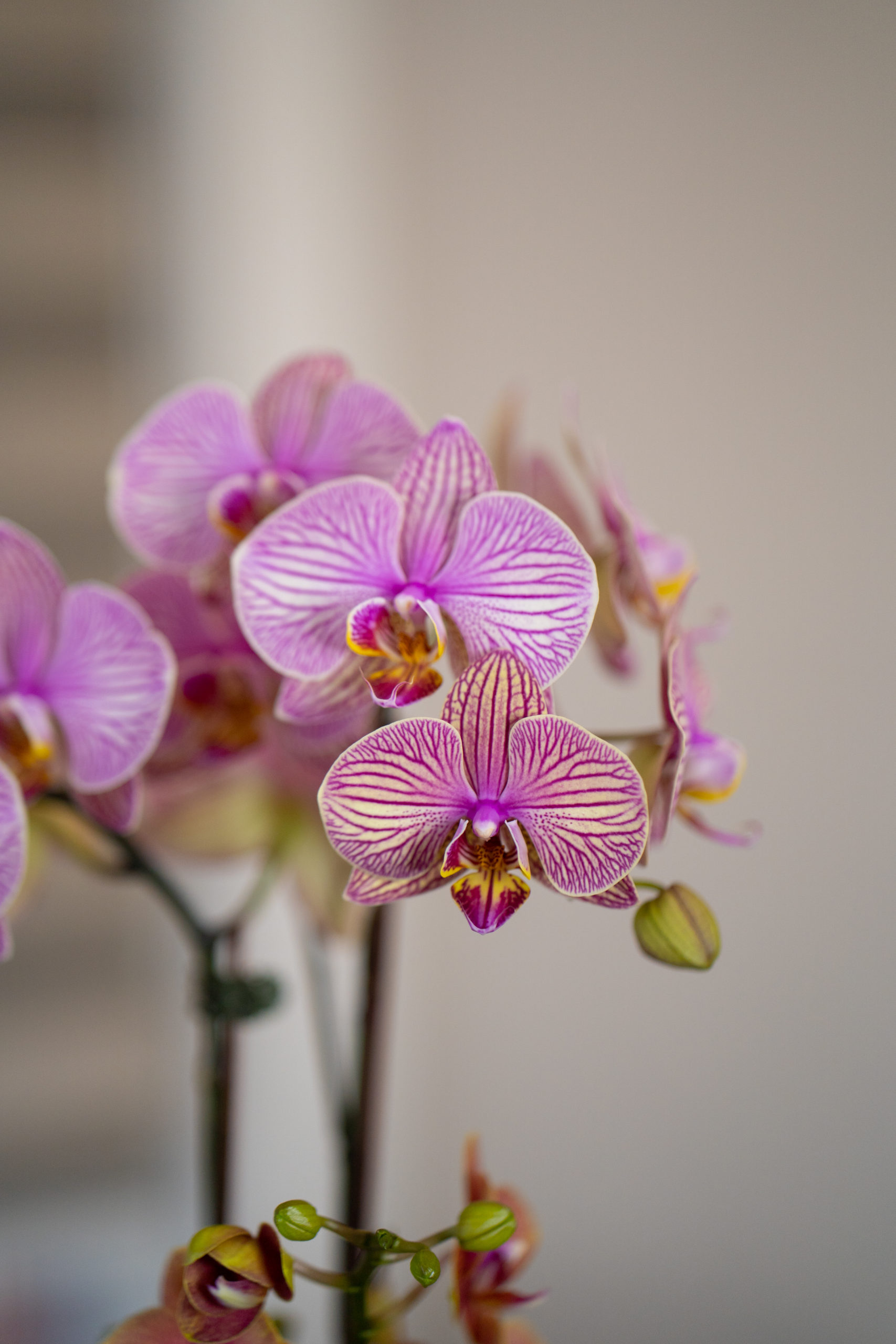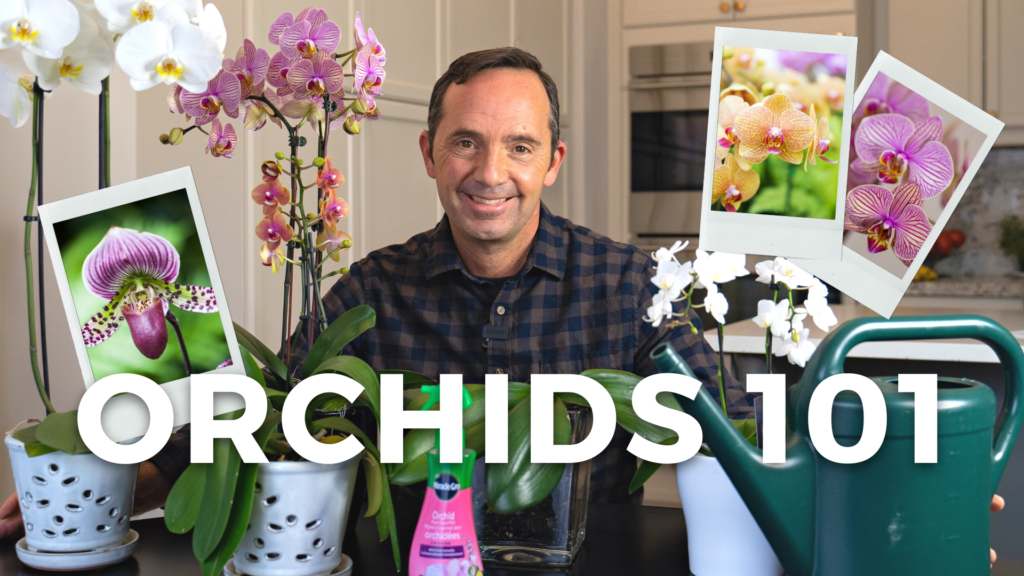Frankie’s Orchid Care Guide: How to Grow Beautiful Orchids at Home
Raise your hand if you’re an orchid lover (I’m over here with both hands up!) With unique, long-lasting blooms and attractive colour options, orchids are a favourite of many gardeners and plant lovers. A reliable plant, orchids are fairly easy to care for. The tricky part? Getting them to re-bloom. With this orchid care guide, you’ll grow beautiful orchids with bountiful blooms in no time!
CLICK THE IMAGE BELOW TO WATCH THIS HOW TO ON YOUTUBE
Interesting Orchid Facts
- Vanilla bean pods are the edible fruit of the orchid Vanilla Planifolia
- The name orchid stems from the Greek word orchis, meaning testicle because the roots were thought to resemble testicles.
- Orchids are the largest family of flowering plants, with over 28,000 species of orchids worldwide.
- Orchid flowers are perfectly symmetrical and can be divided into precise halves.
Growing Beautiful Orchids Starts with Choosing the Right Plant!
Best Orchid Varieties for beginners
Out of the over 28,000 different species of orchids, the most readily available and easiest to grow are Dendrobium (Orchids), Phalaenopsis (Moth Orchids), and Cymbidium (Boat Orchids).
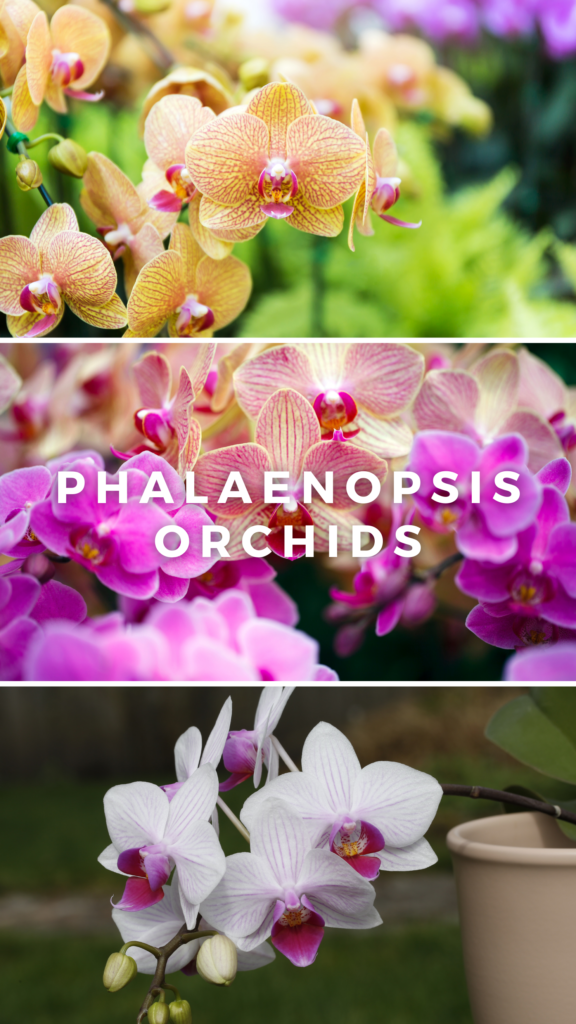
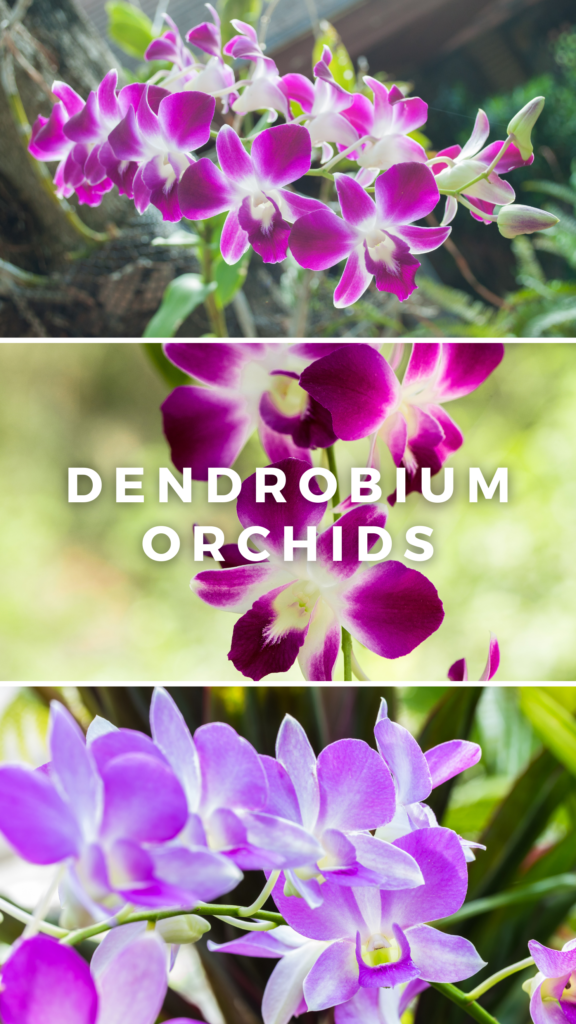
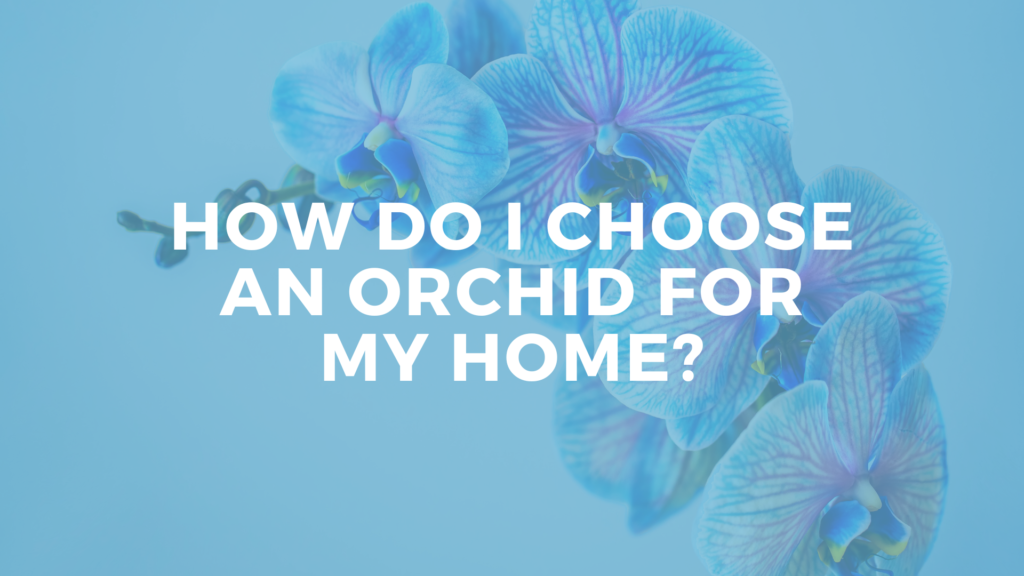
How to Select Your Orchid
- Look for long-lasting bloom power.
It can be tempting to buy a plant with tons of fully open flowers, but it’s best to choose one with blooms just starting to open. It’s at the beginning of its blooming cycle, and you’ll enjoy those flowers for much longer! I also look for the number of spikes. Why buy a plant with only one spike when you can buy one with two for the same price? (You know I’m about the biggest bang for my buck!)
- Check the roots.
Aerial roots that grow right out of the pot are fine with orchids. Make sure the roots are firm, bright green, light green or white. If the roots are limp, they have been overwatered and are dead. If that is the case, choose another plant.
- Inspect the leaves.
Bright, green, stiff leaves that point upward are healthy. Floppy, dark green, leathery leaves have been deprived of light and water. Avoid dark, discoloured spots or patches that may indicate disease.

Where to place an Orchid in your home
Once you’ve chosen your orchid plant, it’s time to bring it home and find the perfect spot! As the seasons change, you may want to re-position your plants. Simply moving them towards or away from the window manipulates the amount of light they receive. You want adequate light in winter months but need to avoid sunburn in the summer.
The ideal spot for orchids is in a bright room (not directly in front of a window) with a stable temperature and a touch of humidity.
- Choose a south or east-facing window. West windows can be too hot in the afternoon (particularly in summer), and north-facing windows are usually too dark.
- Orchids like a bright spot, but too much direct light can lead to sunburnt leaves. A sheer curtain will cast a little shade in the summer months.
- Keep your orchid away from cold windows, as the leaves can freeze in a cold climate if they touch the glass.
- Stay away from drafts, heating vents, fireplaces, and radiators. Your orchid won’t enjoy the fluctuations in temperature.
It seems like a lot of instructions upfront – but if you can find the perfect spot, you’re well on your way to growing beautiful orchids at home!
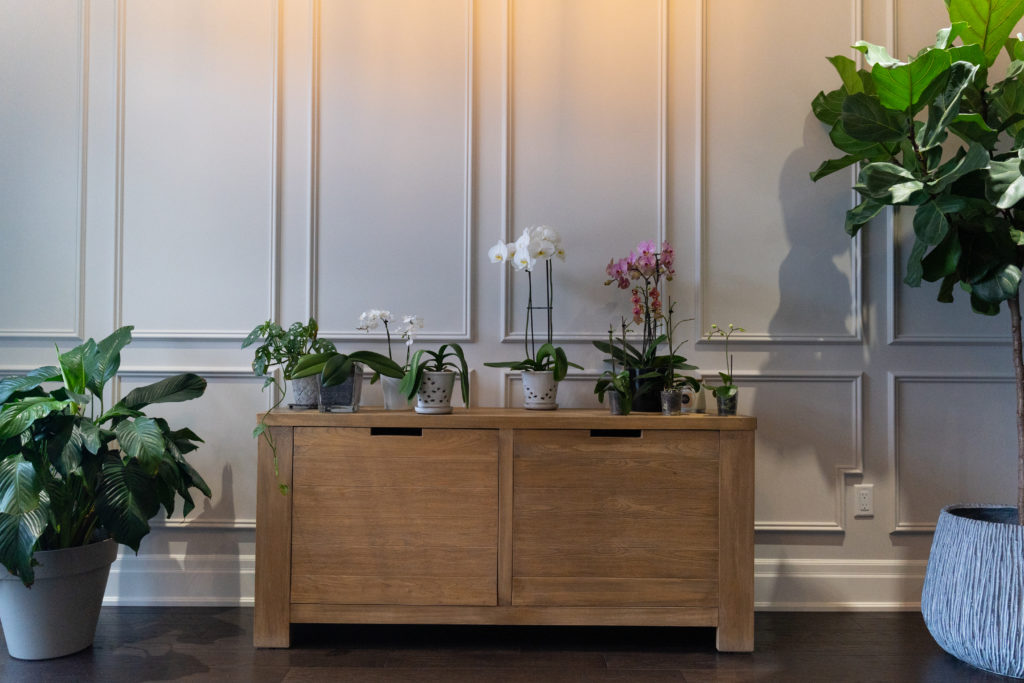
Orchid Care 101: Master the Basics for Beautiful, Bountiful Blooms.


Water
Let’s bust a common myth. Have you ever heard of watering your orchid with two ice cubes once a week? It’s only half right! Using two ice cubes is an excellent descriptor for the VOLUME of water – orchids don’t need much at once. But they are tropical plants and won’t enjoy that icy touch.
Orchids like to be a little dry on occasion. Being constantly wet can lead to root rot – overwatering is one of the most common (and quickest) ways to kill your plants.
The best way to water your orchids is to check them once a week. Pop your finger into the top inch of soil – if it feels dry, add water. Leave it alone if it’s still moist, and check it another day.

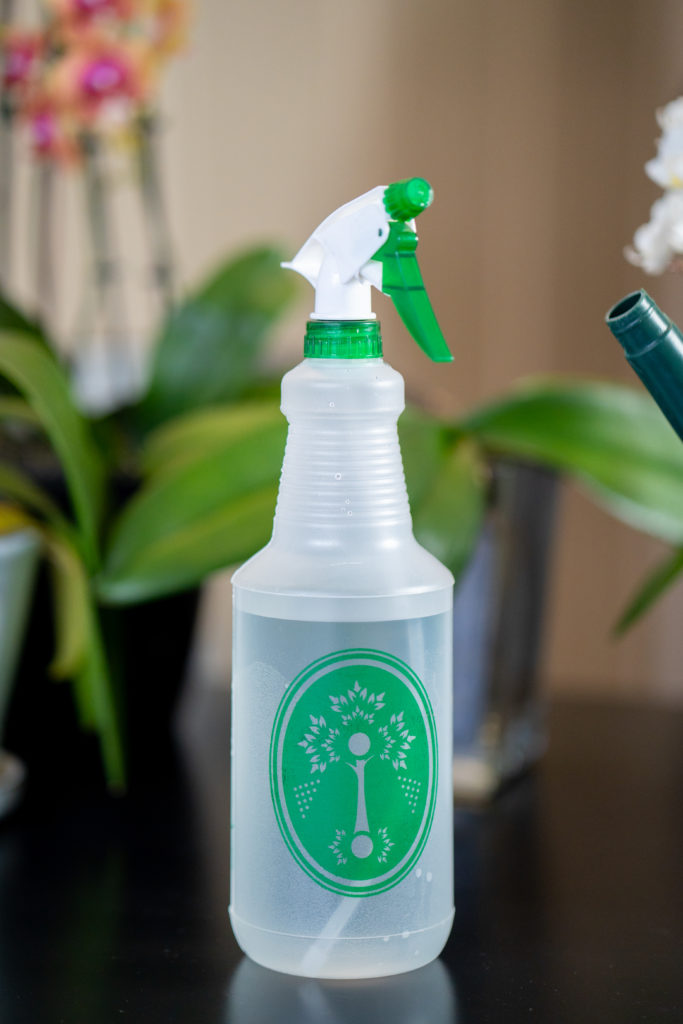
Humidity
Orchids do best when humidity ranges between 40%-70%. In winter, the humidity level in most homes is well below ideal, but there are many easy ways to bump it up.
- Add ferns or other houseplants around your orchid
- Place orchids on top of saucers in humidity trays (filled with gravel and water)
- Use an ultrasonic humidifier or fog-generating device used for terrariums
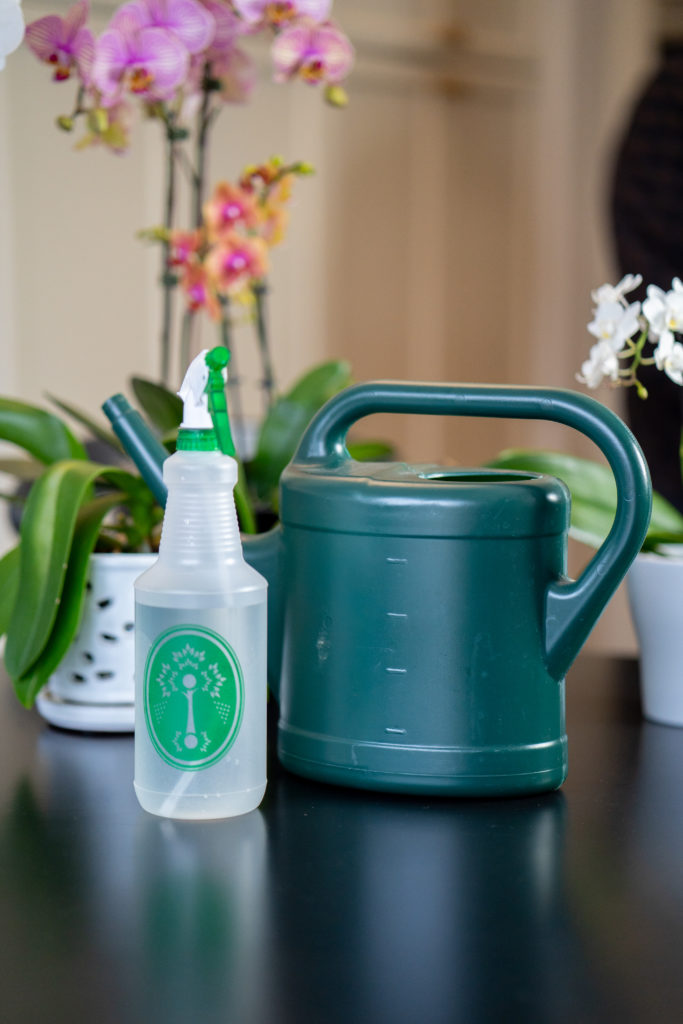
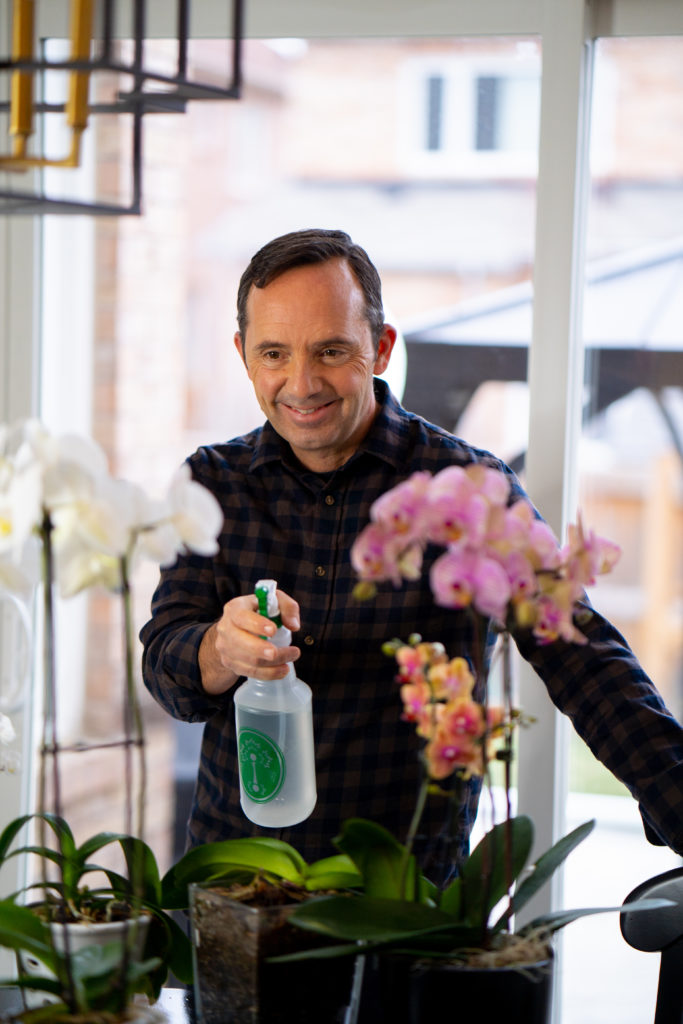

Air circulation
Orchids are fans of fans! The goal is to replicate their natural, breezy environment. An overhead paddle fan set on the slowest speed or a small oscillating fan facing away from your plants should work. Air movement at night is just as crucial as daytime, so fans should run continuously. The gentle movement of thin foliage should be your goal – if your orchids are shaking, turn the fan down a bit.
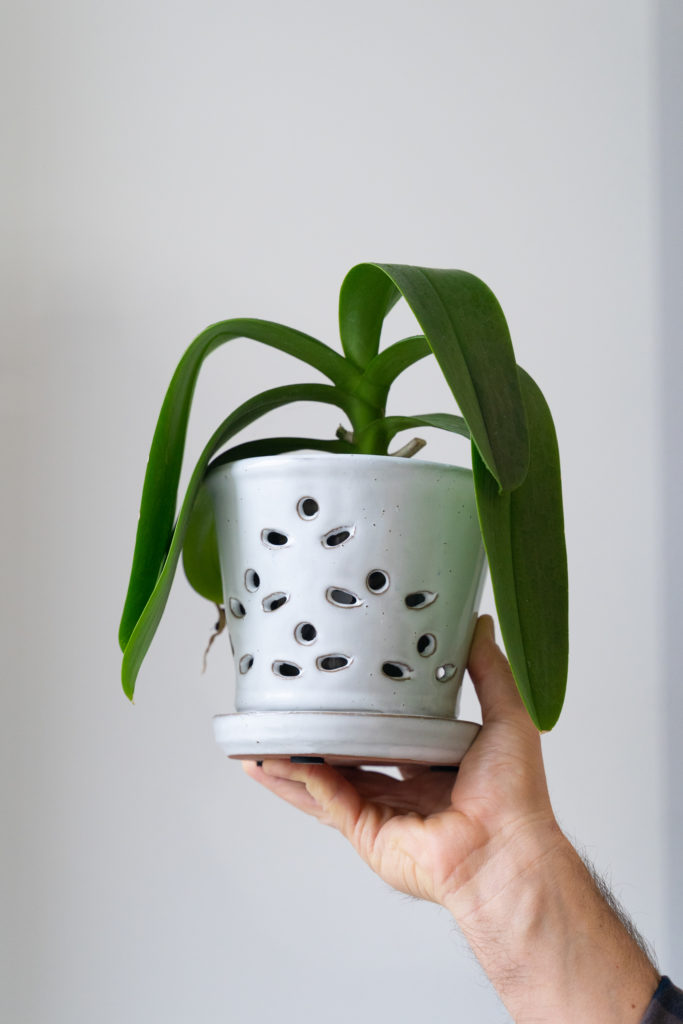
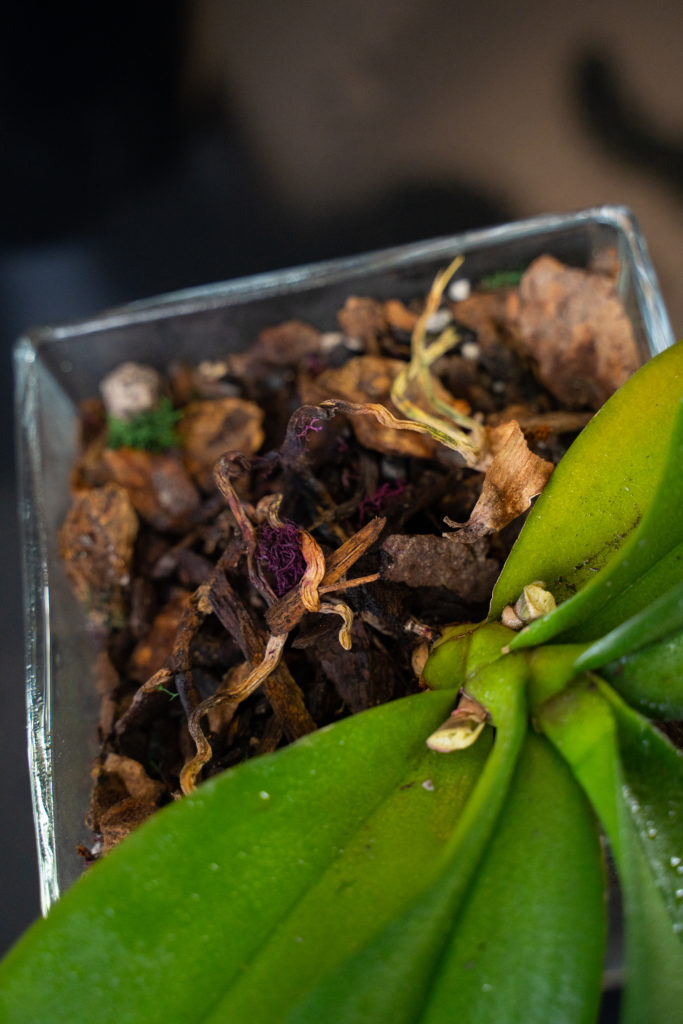
Misting
Misting orchids occasionally can help increase humidity; however, some feel it can also increase the risk of disease. The jury is out on this one! Why not experiment? In my experience, occasional misting helps rather than harms. Here are a few simple rules to set yourself up for success. Ensure the water is clean (wash mister after each use) and use tepid water when misting.
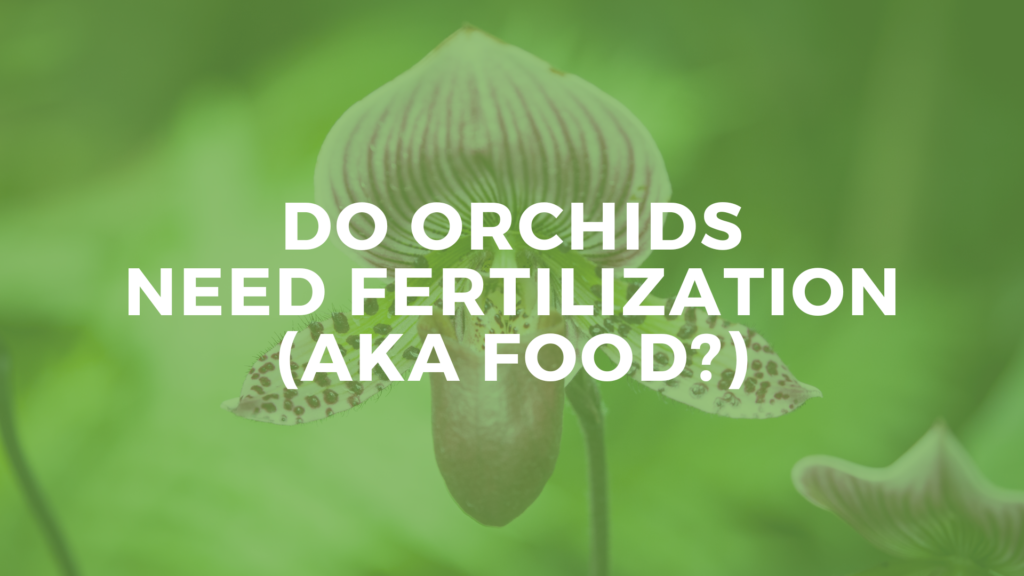
Feeding
Orchids are light feeders. They need fertilizing every one to two weeks in the summer and about once a month in the winter. You can also use a slow-release fertilizer to provide low levels of nutrients with every watering. One essential tip is ensuring the potting medium is moist before fertilizing. Orchid roots are sensitive and can burn if exposed to high concentrations of fertilizer. My go-to for feeding my orchids is Miracle-Gro Orchid Food.

Miracle-Gro Orchid Plant Food Mist
Orchids love plant food just like their leafy friends. Despite their reputation for being difficult, they’ll bloom in your home with the right TLC. Spray them with Miracle-Gro® Ready-To-Use Orchid Plant Food Mist once a week for an instant hit of moisture and nutrients.
Soil
Orchids have specific soil needs. Phalaenopsis and Dendrobium orchids natively grow on the bark of trees in tropical rainforests. To replicate their natural environment, they need soil that can maintain humidity and allow oxygen to flow around the roots. It also needs decaying bark matter or coarse matter. My favourite is MiracleGro Orchid Mix.
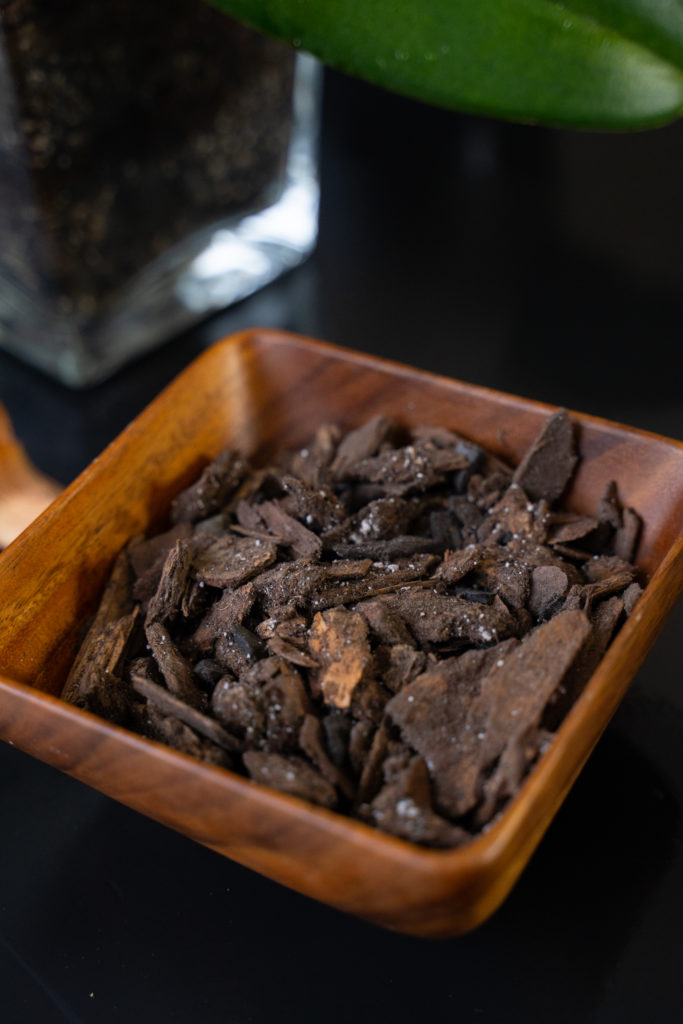
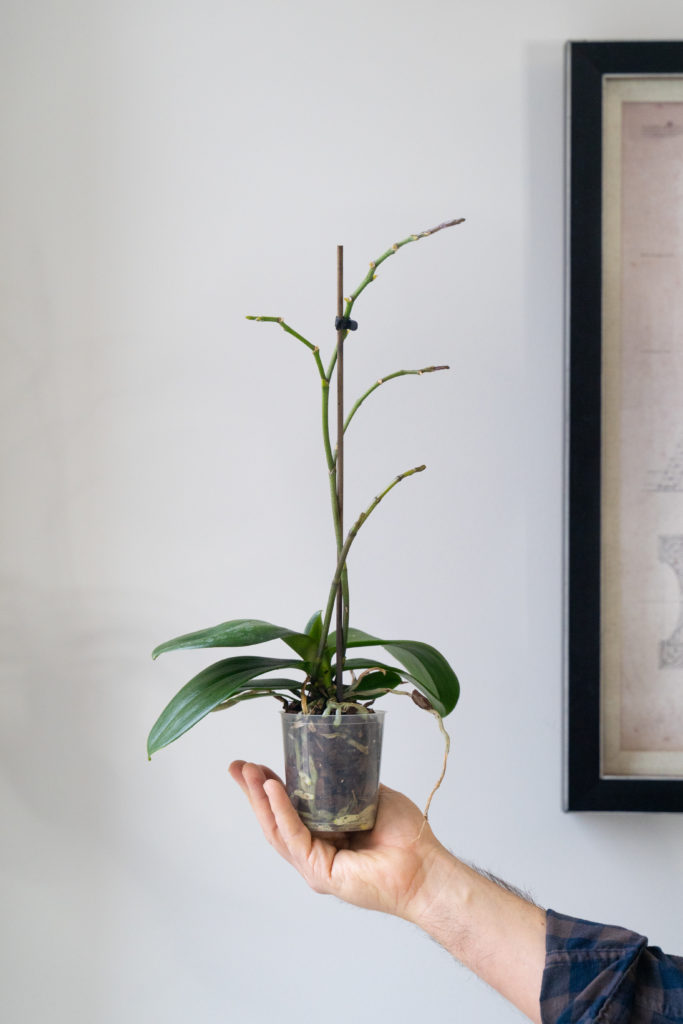

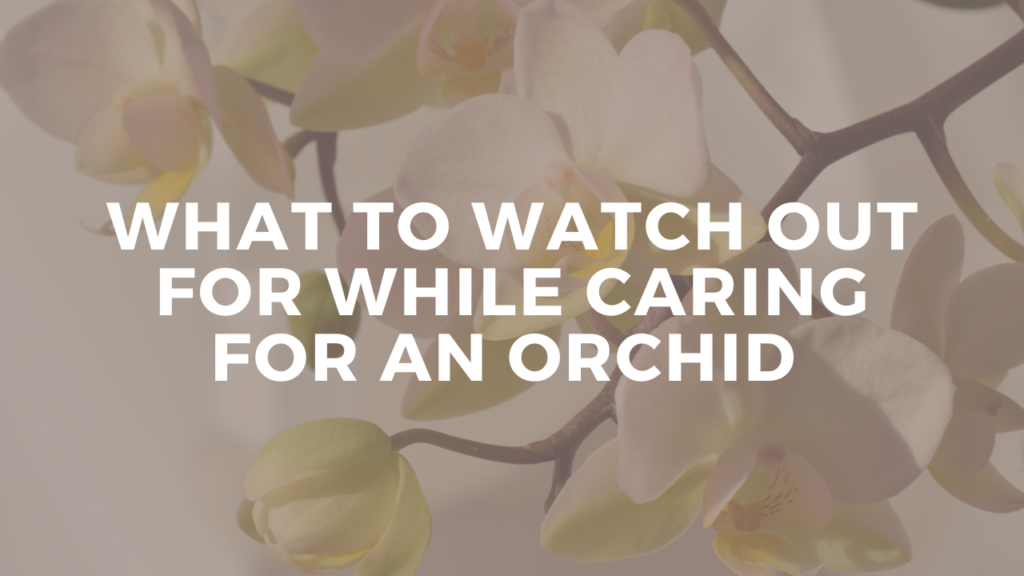
Spotting Problems with your Orchid
Phalaenopsis and Dendrobium orchids are low maintenance and easy to grow. The most significant issues are generally things like root rot, crown rot or sunburn due to too much water or sunlight. Keep an eye on your orchid – the earlier you see signs of a problem, the easier it will be to address it and get your plant back to its healthy self!

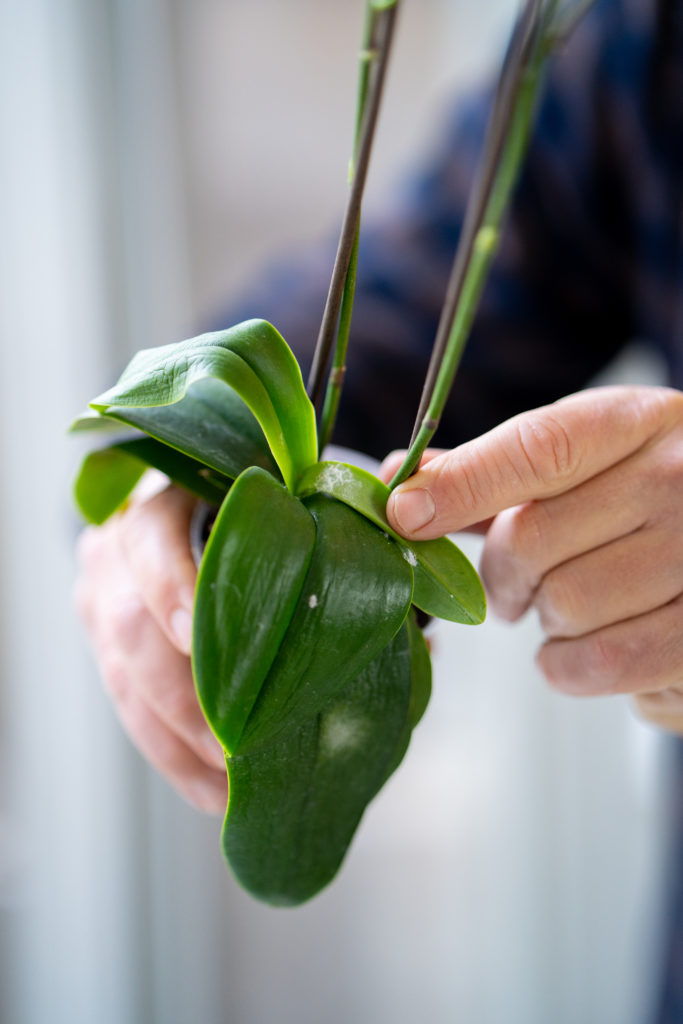
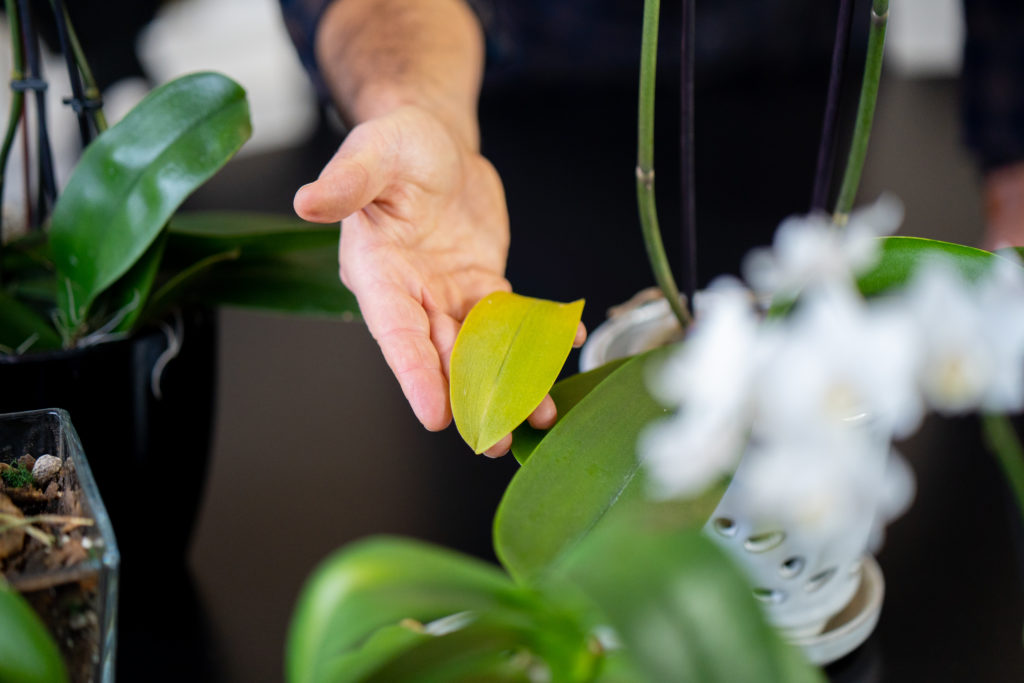
Common Orchid Problems
- Spotted leaves – burnt spots are a sign of sunburn
- Yellow tissue in the leaves – too much light
- Dark spots – not enough light
- Sticky leaves – scale
- Spots that look like cotton balls – mealybug
- Droopy leaves – over or under watering
- Brown, mushy aerial roots – too much water
- Grey shrivelled roots – too little water
- Buds falling off – a sudden change in environment, watering problems, exposure to heat or drafts, air pollution, ethylene gas
- Spotted flowers – Botrytis happens in cool, humid environments with low airflow, where plants are persistently wet.
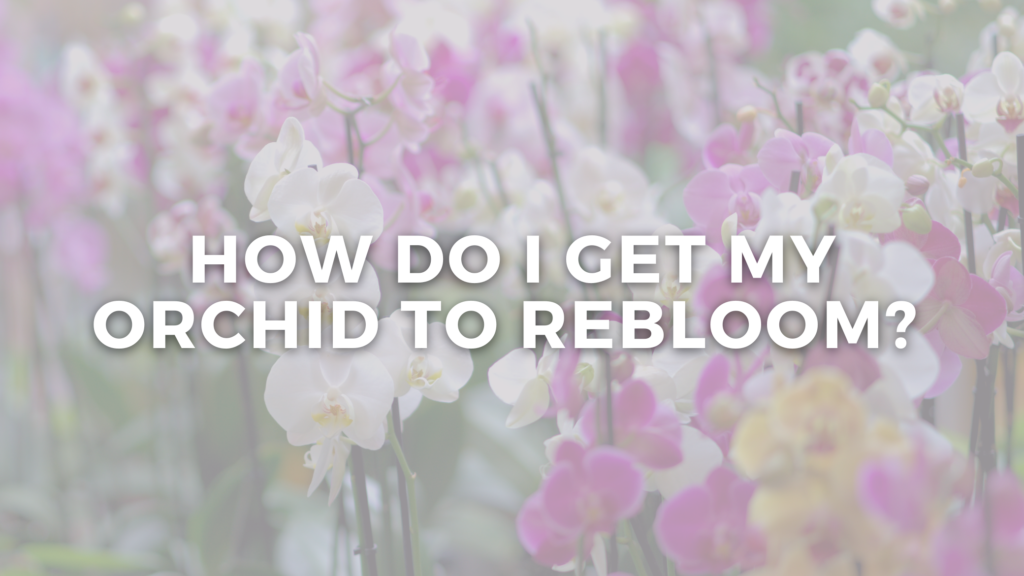
Getting Your Orchid to Rebloom
The question I’m most often asked about orchids is how to get them to re bloom. Tip #1 is to stay patient! Orchids go long periods between blooms.
- When blooms are finished, cut the spike down to the leaves, and the plant should rebloom within a year. If there are nodes on the stem (small bumps where the new growth sprouts), you can cut the stem, leaving two nodes. One of those should sprout within 8-12 weeks.
- Allow your plant to rest and reduce watering. Place it in a bright room where the temperature is slightly cool at night.
- After three weeks, resume regular care and continue watering and fertilizing while waiting for your orchid to bloom!
With stunning blooms that last for months, orchids are one of the best indoor flowering plants. Your plant can last for years – if you treat it right! I hope these tips help you grow beautiful orchids at home! If you have any other orchid questions, send them my way.
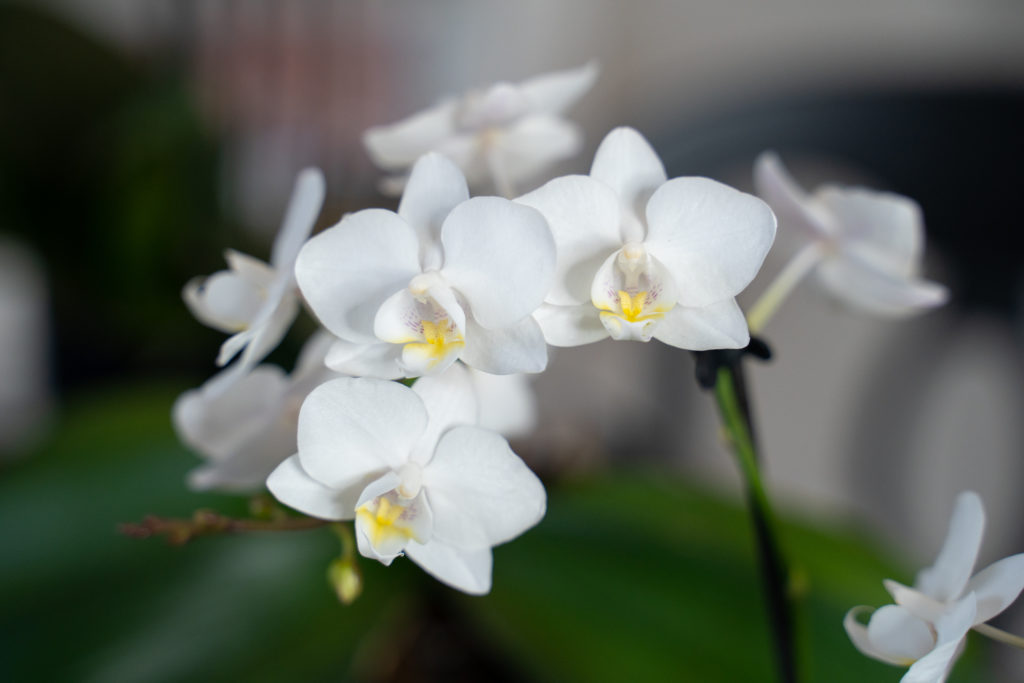
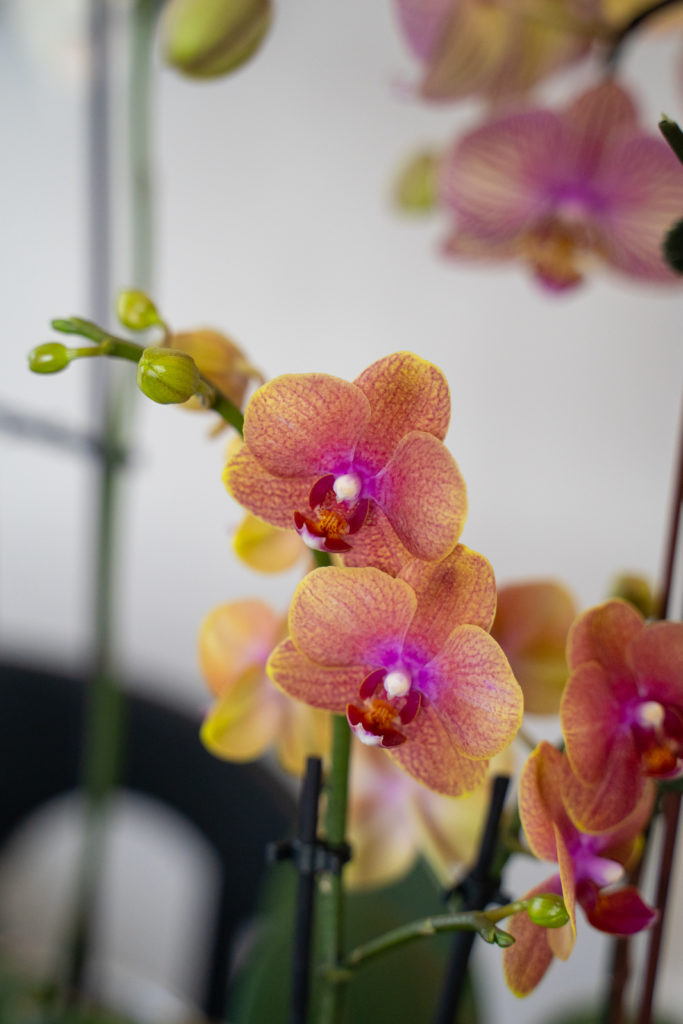
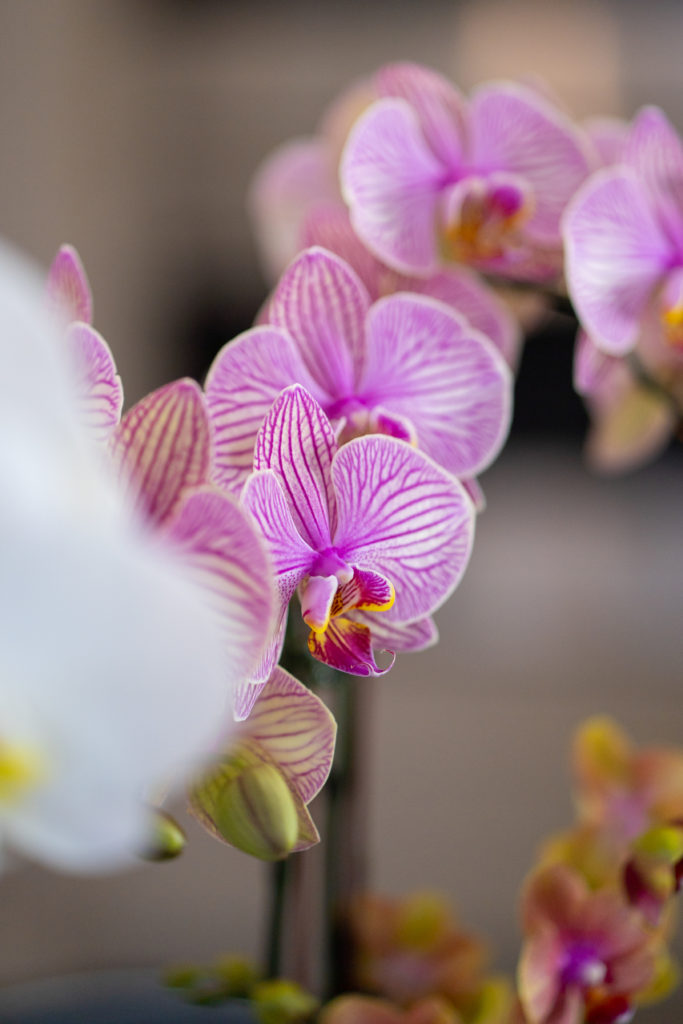
Let me know if you have more questions when it comes to Orchids or any other indoor plant!
Happy Growing,
Frankie
